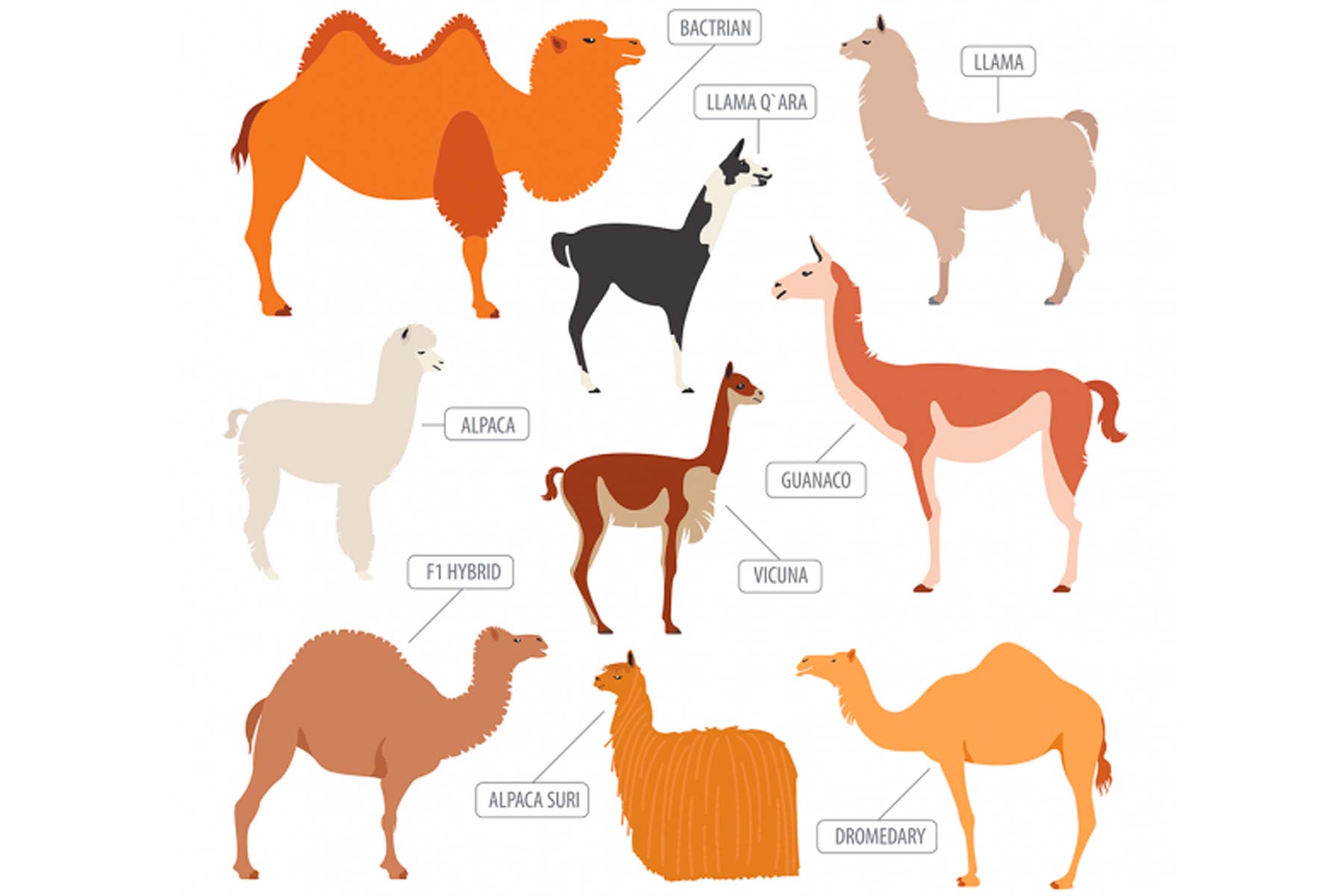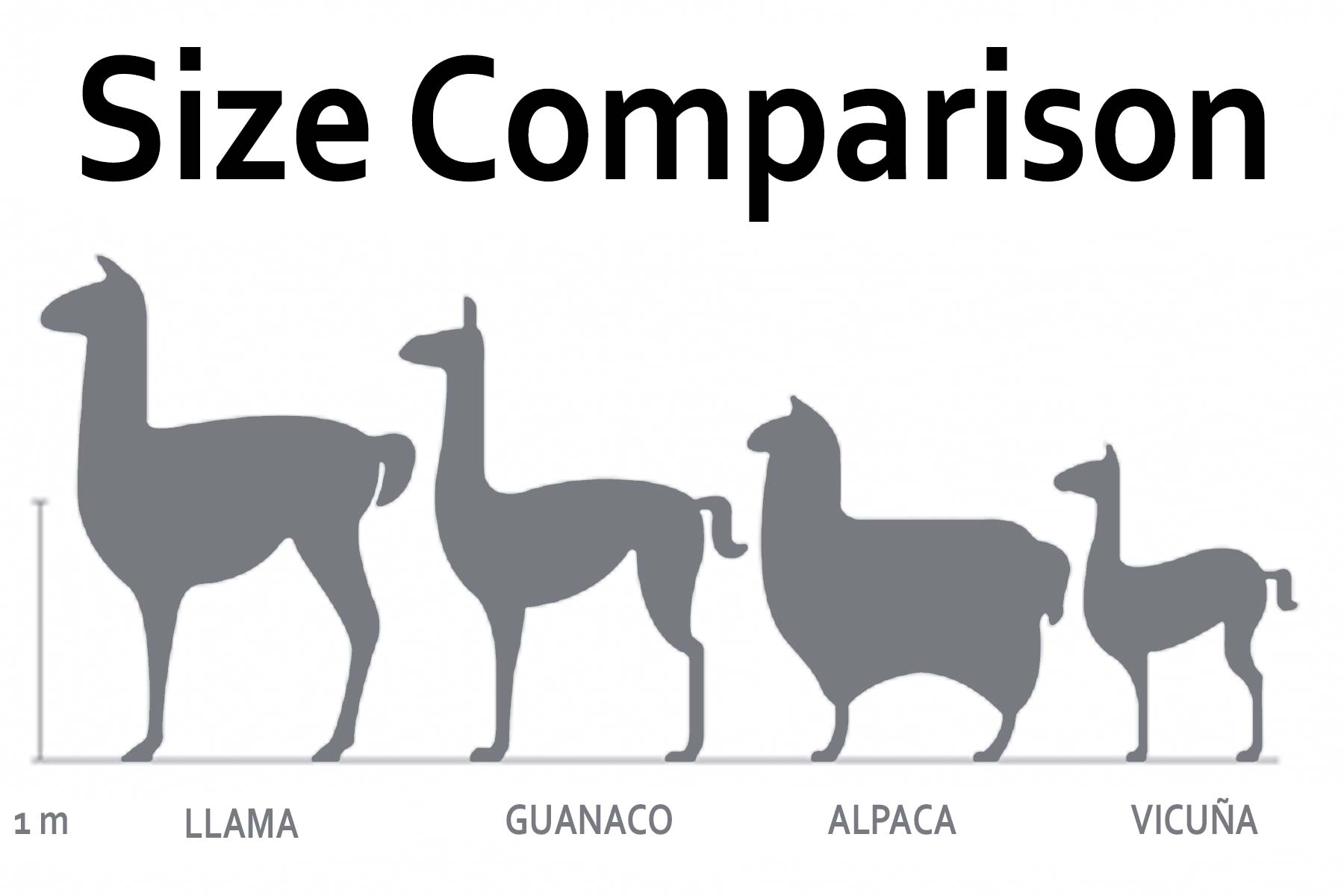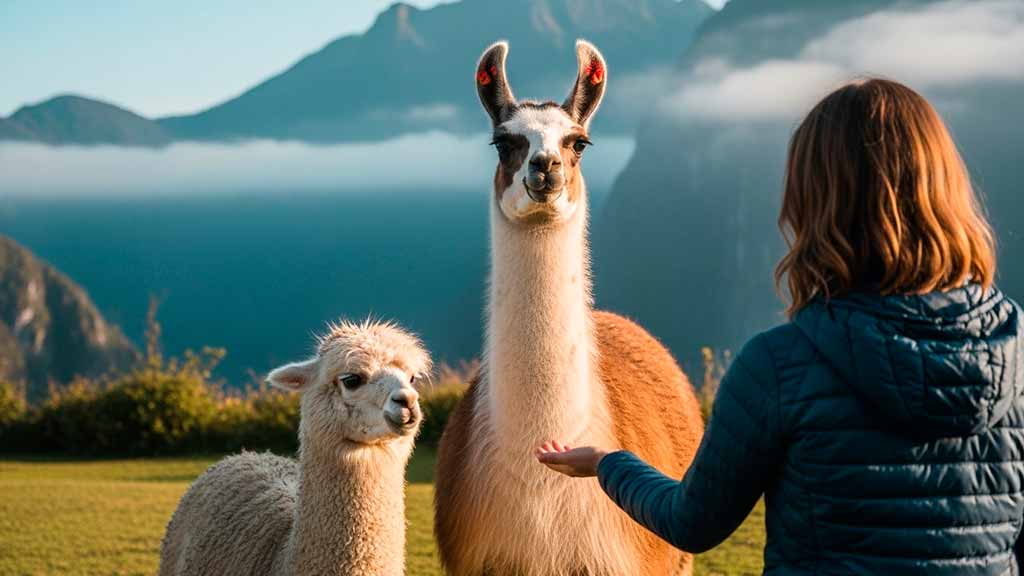Imagine, for a moment, the crisp, pure air of the high mountains during an Andean sunset. Around you, a silence broken only by the wind and the gentle footsteps of ancient beings. Across the grand canvas of the Andes, from Peru to Bolivia, Chile, and Argentina, live four creatures that are more than just fauna: they are the woven spirit of this land. We’re talking about the Andean camelids.
It’s easy to tell an alpaca from a dromedary camel, but what about the differences between a llama and an alpaca? And between a vicuña and a wild guanaco? Could you tell them apart?
It’s very likely that your travel dreams of Peru include the classic image of a llama or an alpaca. But would you know for sure which one you’re looking at? Getting to know them is the first step to truly connecting with the landscape. This guide isn’t just to help you learn their differences; it’s an invitation. An invitation to one day feel the warmth of their wool and walk among them, understanding the history each one carries in its gaze.
The Domestic Cousins: The Heart of Andean Life
For over 5,000 years, the people of the Andes have coexisted with two of these animals, creating a bond of respect and mutualism that endures to this day.

The Llama: The Charismatic Guardian
The largest and most robust of the family. You’ll recognize the llama instantly by its proud posture, elongated face, and, above all, its long, curved, banana-like ears. For centuries, it has been the primary beast of burden in the Andes, capable of transporting goods along impossible paths. Its wool is coarser, but its character is what truly fascinates. As a local guide, Alex, once explained to me on a trek through the Sacred Valley, “The llama is independent, even a bit feisty if it needs to be.” That’s why it’s not uncommon to see them acting as brave guardians, protecting herds of sheep or alpacas.
- Status: Domestic
- Key Trait: Long, banana-shaped ears
- Weight & Height: Up to 265 lbs (120 kg) and 4 ft (1.2 meters) at the shoulder
- Temperament: Independent, protective, and strong

The Alpaca: The Cloud of Softness
The alpaca is the crown jewel of Andean textiles. Smaller, more rounded, and with a noticeably flatter, woollier face, it looks like it’s wrapped in a cloud. Its ears are short and pointed. Selectively bred for the fineness and softness of its fiber, its wool gives life to the sweaters, ponchos, and blankets that warm not just the body, but the soul. Though its meat is also consumed in traditional dishes, its primary value lies in its incredibly soft fleece. Unlike the llama, the alpaca is more timid and gregarious, always seeking the company of its herd. The largest populations are found in high-altitude regions like Puno and Cusco.
- Status: Domestic
- Key Trait: Flat, fluffy face and spongy fleece
- Weight & Height: Between 100-170 lbs (45-77 kg) and up to 3 ft (90 cm) tall
- Temperament: Timid, gregarious, and very gentle

The Free Spirits: The Wild Essence of the Andes
Beyond the corrals and communities, on the vast plains of the Altiplano, run the wild relatives. Seeing them is a privilege, a glimpse into nature in its purest state.
The Vicuña: The Golden Treasure of the Altiplano
This is the national animal of Peru, and its stylized silhouette adorns our coat of arms as a symbol of our nation’s animal wealth. The vicuña is the smallest and most delicate of the four, an ethereal being that seems to dance across the landscape at over 16,400 feet (5,000 meters) of altitude. Its wool is considered the finest and most expensive animal fiber in the world, a natural silk that led to it being hunted nearly to extinction decades ago. Thanks to strict protection laws, its populations have now recovered. Shearing them is an ancestral ritual called a chaccu, where communities gather them without harm to clip their precious fleece—an act of profound respect for this living treasure.
- Status: Wild and protected
- Key Trait: The smallest and most elegant; cinnamon-colored
- Weight & Height: Maximum 110 lbs (50 kg) and 2.6 ft (80 cm) tall
- Temperament: Skittish, agile, and lives at very high altitudes
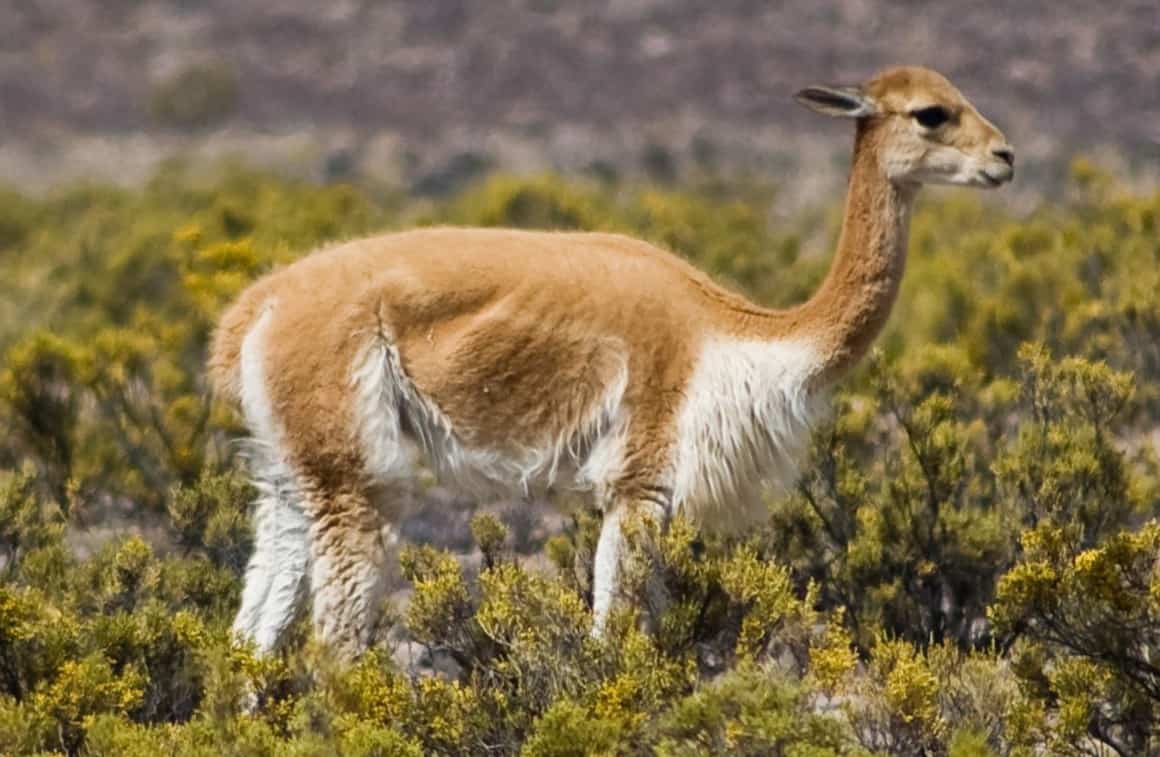
The Guanaco: The Indomitable Explorer
The guanaco is the wild ancestor of the llama, a natural survivor and one of the largest native mammals in South America. It’s more slender than a llama but more robust than a vicuña, with reddish-hued fur and a dark face. Its most fascinating adaptation is the incredibly thick skin on its neck, a natural defense against predators like pumas. According to Andean tradition, this tough skin was so valued by ancient peoples that they used it to make the soles of their shoes. Encountering a herd of guanacos galloping across Patagonia or the high Andes is a powerful image of nature’s untamable force.
- Status: Wild
- Key Trait: Thick neck skin and reddish coloration
- Weight & Height: Similar to a llama, but more slender
- Temperament: Territorial, adaptable, and resilient
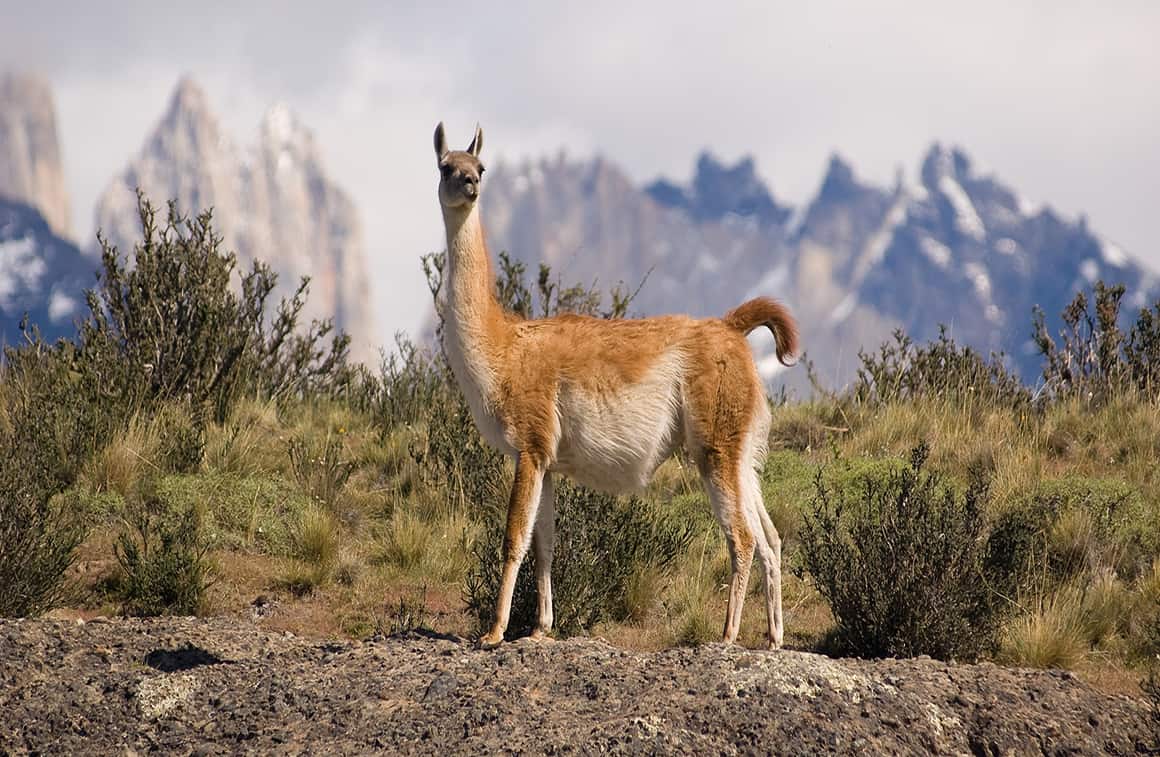
Key Differences Between Vicuña and Guanaco: The Wild Duel
Although both are free spirits, it’s easy to tell them apart if you know where to look. The vicuña is the delicate dancer of the Altiplano: it is noticeably smaller, more slender, and its coat is a uniform, light cinnamon color with a white chest. The guanaco, in contrast, is the robust athlete: it is much larger and more heavyset, with a more reddish coloring on its back that contrasts with its dark face and white underparts. The clearest difference is size: if you see a wild, graceful, and small camelid at extreme altitudes, it is probably a vicuña. If it looks larger, almost the size of a llama, and more robust, you are looking at a guanaco.
Andean Camelids at a Glance
Llama
- Size: Large & Robust
- Ears: Long, Banana-Shaped
- Face: Long, less wool
- Habitat: Domesticated
- Fiber: Coarse Wool
- Status: Domestic
Alpaca
- Size: Small & Rounded
- Ears: Short, Pointed
- Face: Short, “smashed-in”
- Habitat: Domesticated
- Fiber: Very Fine, Soft Fleece
- Status: Domestic
Vicuña
- Size: Smallest & Dainty
- Ears: Pointed, Alert
- Face: Delicate, alert
- Habitat: Wild (High Andes)
- Fiber: Finest Fiber in the World
- Status: Wild & Protected
Guanaco
- Size: Large & Slender
- Ears: Pointed, Alert
- Face: Dark-colored face
- Habitat: Wild (Andes/Patagonia)
- Fiber: Coarse Wool
- Status: Wild
From Information to Encounter
Now they are no longer just “long-necked animals.” Now you know that each has a name, a history, and a place in the world. The next time you plan that dream trip to the Andes, you’ll carry this knowledge with you. And when you are here, in the silence of the puna, and one of these creatures crosses your path, you will recognize it. It won’t be a simple sighting; it will be an encounter. And in that moment, your journey will have found a much deeper meaning.
Is an Andean Adventure Calling Your Name?
We understand that a true adventure isn’t found in an itinerary, but in the connection you create with a destination. At Inka Jungle Tour, our specialty is transforming your curiosity into an authentic and memorable experience, giving you the peace of mind that comes from being guided by local experts.
If you’re ready to feel the Andes instead of just seeing them, let’s have a conversation.
Tell us about your dream trip on WhatsApp
